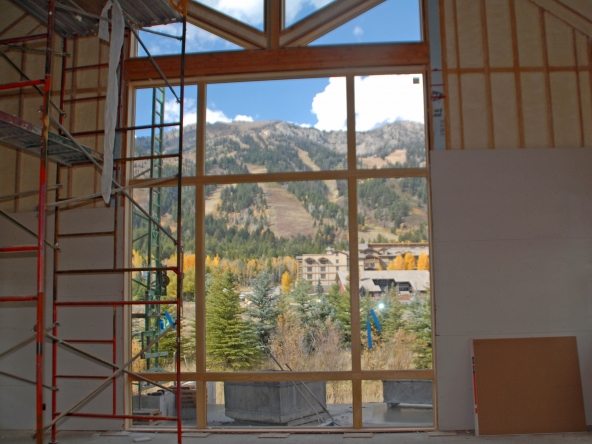As mentioned last week, Jackson Hole real estate activity is peaking for the year and producing research and writing specifically for Teton Realty Today is taking a back seat to serving clients.
With that in mind, below is the latest economic information shared with me by my friend and client Dr. Ken Mayland of ClearView Economics. As the name of his business portends, he takes a hard look at the numbers that shape our economy and turns them into concise summaries.
His clients pay him well for these insights, but he was nice enough to let me pass these along here. Though they are not focused on Jackson Hole, which is the focus of this site, and the analysis is well outside my area of expertise, I hope you find them as interesting as I do.
1. The numbers. Total nonfarm payrolls fell 131k for July, according to the Bureau of Labor Statistics. The total job loss number, however, includes a layoff of 143k Census workers, whose numbers temporarily swelled earlier in the year to take the 2010 Census. There was an additional 59k loss of government workers, mostly concentrated at the state and local levels. Doing the arithmetic, that put private economy job generation in July at +71k.
2. More numbers. The unemployment rate remained unchanged in July at 9.5%. But the arithmetic that went into that number included a 181k drop of the labor force, a 159k loss of employment, just a 24k drop in the numbers of those unemployed, and a 381k increase in the number of persons not in the labor force. That’s a lot of numbers, but what this says is that the jobless rate remained unchanged in the worst way.
3. Not done yet. Average hourly earnings grew 0.2% (to $22.59/hour) and average weekly hours in the private sector rebounded 0.1 hours (to 34.2 hours). These numbers are IMPORTANT! Increasing hours worked is one way of expanding the labor input into the economy, and is a substitute for headcount. One-tenth of an hour is a 0.29% increase, which applied to the private payroll base would be a substitute for 312k workers. Combining the rise of average hourly earnings and the length of the workweek means that there was income generation in July. Average weekly earnings in July grew just short of 0.5%–not a bad performance.
4. Look who is leading. Manufacturing jobs increased by 36k in July—the largest gain registered by any major sector of employment. The goats (in the private sector): construction (-11k), financial activities (-17k), and professional/business services (-13k). So far this year, 630k private sector jobs have been created.
5. Uh-oh. Temporary jobs declined 6k in July without a BIG corresponding advance of other private sector jobs. Does this mean that the momentum of overall job growth is waning???
6. Who is being left behind? See the following table (from the Late-July issue of ClearView on the Economy):
An Early Assessment of the Impact of the Increase in the Minimum Wage
| 12-Month Employment Changes
By Race, Age, Sex, and Education |
|
| Category: | 12-Mo %Ch |
| White Males, > 19 years | -0.1% |
| White Females, > 19 years | -0.6% |
| White Teens, > 16-18 years | -13.7% |
| Black Males, > 19 years | +0.7% |
| Black Females, > 19 years | +0.1% |
| Black Teens, > 16-18 years | -14.7% |
| Hispanic Males, > 19 years | +1.9% |
| Hispanic Females, > 19 years | +2.6% |
| Hispanic Teens, > 16-18 years | -20.3% |
| Less than H S Diploma | -0.6% |
| High School Diploma | -2.1% |
| Less Than Bachelor’s Degree | -0.6% |
| Bachelor’s Degree or Higher | +1.9% |
| Source: Bureau of Labor Statistics. | |
Don’t we ever learn? The recovery is about one year old (assuming a June 2009 trough). What’s happened in the job market over this past year? The accompanying table shows the percent change in employment from June 2009 to June 2010, by demographic categories of the population. Black employment and Hispanic employment has fared better (slightly) than white employment over this past year. Maybe that is not a surprise, as these areas of employment suffered more during the declines; hence, they have more ground to recover. But glaring are the substantial job losses by ALL teens. Also, lesser skilled persons, as measured by educational attainment, fared worse. Why? The July 2009 step-up of the minimum wage looms large. This is just what theory and past history suggests.
7. Taking stock. The labor market is showing some improvement, and the comparisons to 18 months ago are like night and dawn. But at this point of the business cycle, the economy should be creating 200k to 300k jobs per month. It is not. Company earnings performance has been terrific while company job creation has been lackluster, to say the least. There are clear headwinds that are holding back company hiring. Some significant portion of the explanation—or blame—must be laid at the feet of this Administration, which has created a hostile and uncertain business climate. Looming large are the full scale restructuring of the health care system, punishing the usage of carbon-based energy, and a slew of new taxes. Individual industries, such as banking/finance and energy, have come under fire. Meanwhile, the federal government, by engineering ineffective stimulus programs and amassing gargantuan deficits, is making a headlong rush to financial ruin. Given these uncertainties and probabilities of higher future costs, why hire now? This Administration needs an attitude adjustment. Perhaps that will come with the November elections.


